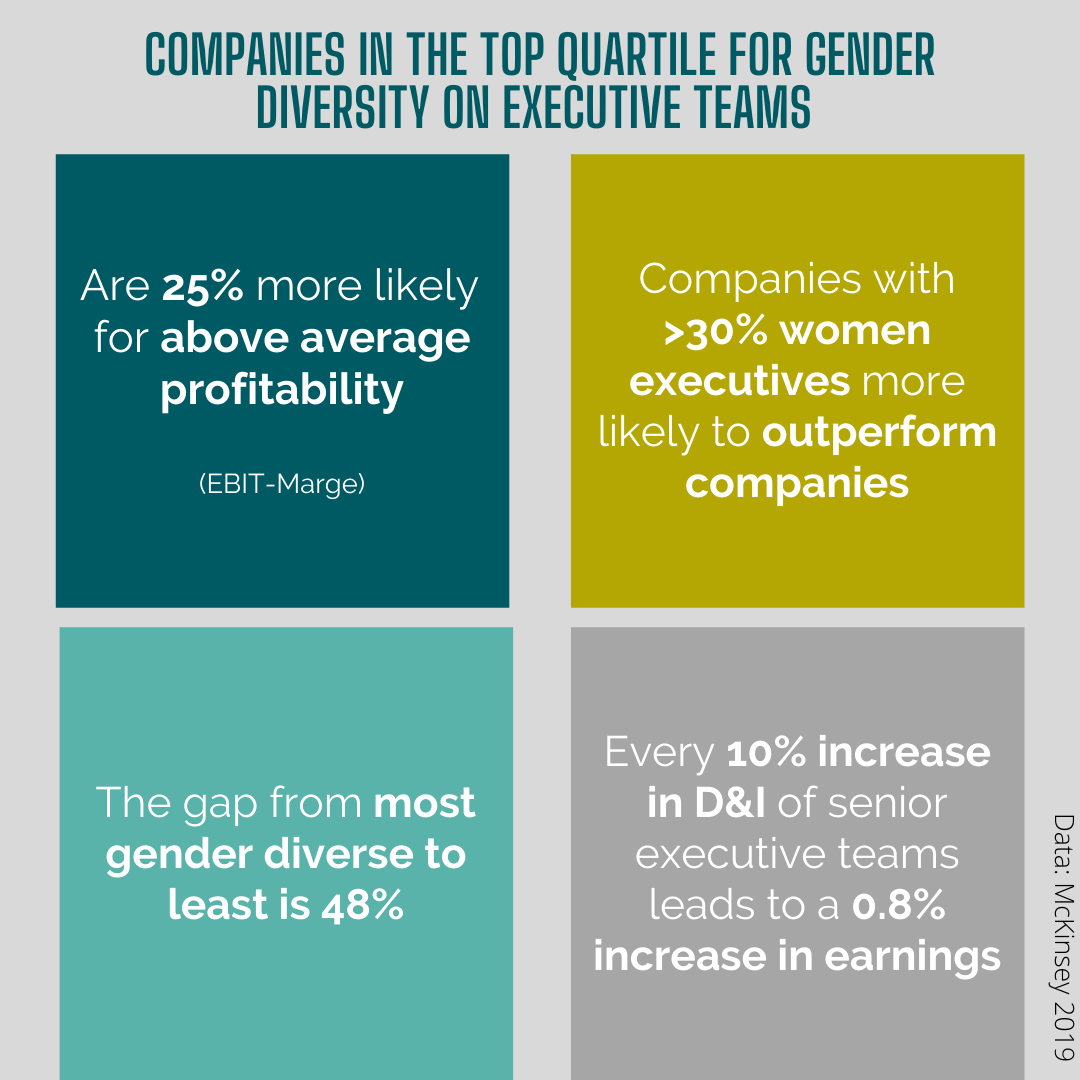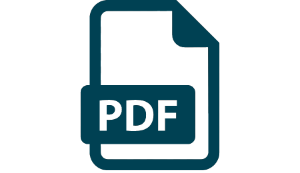Every era has its buzzwords. Diversity, Equity and Inclusion, or DE&I for short, is currently very popular. As entrepreneurs, we feel a certain pressure to take DE&I measures, but do we actually understand what is meant by it and what it is all for? Is it more than a hyped trend and do DE&I measures taken in organizations and companies actually bring tangible benefits that go beyond mere image politics? Let’s take a fresh look at DE&I.

Until recently, the common reaction was, “Wow! Your company has a diversity and inclusion program?” Since then the question has changed to “What? Your company DOESN’T have a diversity and inclusion program?”
Sabine Gromer, Founder of MagnoliaTree
What do we actually mean by DE&I?
We all use buzz words in our everyday speech, sometimes we don’t even know the definition of these words (at least not exactly). Let us explain some of the key “buzz” terms that will show up throughout this article.

Di|ver|si|ty; difference, multiplicity. Diversity refers, among other things, to economic, cultural and social diversity in human societies. In the business context, we understand this to mean diversity and difference in teams. Diversity management focuses on increasing success through deliberately diverse teams.

Equi|ty; a state in which all members of a team are offered the same treatment and the same opportunities, regardless of their affiliation. To achieve eqity of opportunity, structural constraints must be reduced and, ideally, eliminated altogether. Equitable opportunity allows individuals to grow with all their abilities and potential. From our experience, true equitable opportunity is the most difficult goal to achieve. Therefore, it makes sense to think of equal opportunity as a path rather than a goal.

In|clu|sion; literally belonging, is the opposite of exclusion and calls for creating a work environment where all members feel welcome and every facet of their identity, especially their differences, are valued. Inclusion is when you can just be yourself.
It is now common to mention diversity, equity and inclusion in the same breath, whereas for a long time we spoke only of diversity and later of diversity and inclusion. Diversity, inclusion and equity are closely related. Their contents overlap, yet they are different concepts that do not mean one and the same thing.
Before you set DE&I measures, you need to understand these differences and the overlap. As on organization it is also vital to find your own definition of DE&I, taking into account your individual company culture.
Is it enough to simply put a woman on the board and/or hire employees with a migration background?
Many companies see DE&I measures as a good opportunity to polish up their image. Putting a woman on the board or bringing a person with a migration background into a team may be seen as laudable actions from the outside but, believe us, a superficial approach not only changes little, it may even be more damaging in the long run than not taking any DE&I measures at all. Only when a DE&I strategy is understood, internalized and supported by all stakeholders, will it also bring sustainable benefits. A woman quota or a foreigner quota will bring little to no benefit. The system will overrule them and swallow them. In order to survive in an unchanged system, you will assimilate and thus not be able to develop your full potential.

A woman quota is not a DE&I measure.
Why should you NOT set DE&I measures if you won’t take them seriously?
First and foremost, it has to do with trust. Measures set for the wrong reasons break trust in both the company and the leadership. They also lead to internal disruption because they have a similar traumatizing effect on the workforce as reorganization and restructuring measures. From a purely financial point of view, such superficial measures also make no sense because they have no effect or, in the worst case, a negative effect, while at the same time being costly.
Do you think there is no discrimination in your organization?
Many people believe they go through life without prejudice, standing objectively above things and neither consciously nor unconsciously discriminating. But as humans, we simply like to think in terms of pigeonholes, because the automatic classification of people and situations has a great (evolutionary) benefit: it simplifies our thinking and saves us a lot of energy. We have prejudices but we are usually not aware of them. Structural and unconscious prejudices are attitudes and beliefs that lie outside our consciousness. We distinguish between structural and unconscious prejudices. Structural prejudices are collective, system-defined prejudices that are usually not questioned. One example is from when the car industry tested with exclusively male dummies. This led women to be 47% more likely to be seriously injured in an accident and 17% more likely to die in an accident than men. In contrast, we understand unconscious bias to be individual, personal biases that we acquire over the course of our lives, effectively the footprint of structural bias on an individual. Even our technology does not act without values and prejudices. For more on this, read our article on the film Coded Bias.

If you still think you are completely unbiased, we recommend you take Harvard University’s Implicit Bias Test. Link.
We guarantee you, you too are biased.
A short movie on the topic: PURL
If a DE&I strategy is not meant to be a mere image polish, what is the point at all? What do DE&I measures do for my company?
We understand. You need facts, figures, data and above all one thing: a marked benefit for your company. You are not a charity and it is not your job to change the world. Don’t worry, DE&I strategies do correlate with business value. In recent years, countless credible studies have been conducted that come up with proud numbers.

More:
- DE&I measures reduce absenteeism among employees:by 10%.[1]
- Organizations with higher levels of gender diversity and HR policies and practices that focus on gender diversity are associated with lower employee turnover.[2]
- Organizations with inclusive corporate cultures and practices are 57.8% more likely to improve their reputation.[3]
- Consumers are more likely to purchase or consider purchasing a product after seeing an advertisement that is perceived as diverse or inclusive.[4]
- Companies in the top quartile of ethnic/cultural diversity on leadership teams are 33% more likely to have industry-leading profitability. [5]
- Companies with the most ethnically/culturally diverse boards globally are 43% more likely to have higher profits.[6]
- A sense of belonging in the workplace leads to a 56% improvement in performance and a 50% reduction in risk for employee turnover.[7]
- 67% of employees:pay attention to diversity when looking for a job.
So it’s clear. Diversity, equity and inclusion are much more than mere buzzwords. They can be a powerful tool and an incredible opportunity to successfully lead your company through a new era.
[1] Source: Juliet Bourke and Andrea Espedido, “Why Inclusive Leaders Are Good for Organizations, and How to Become One,” Harvard Business Review, March 29, 2019.
[2] Source: Cara C. Maurer and Israr Qureshi, “Not Just Good for Her: A Temporal Analysis of the Dynamic Relationship Between Representation of Women and Collective Employee Turnover,” Organization Studies (2019).
[3] Source: International Labour Organization, Women in Business and Management: The Business Case for Change (2019): p. 21.
[4] Source: Shelley Zalis, “Inclusive Ads Are Affecting Consumer Behavior, According to New Research,” Think with Google, November 2019.
[5] Source: https://www.mckinsey.com/capabilities/people-and-organizational-performance/our-insights/delivering-through-diversity
[6] Source: https://www.mckinsey.com/de/news/presse/neue-studie-belegt-zusammenhang-zwischen-diversitat-und-geschaftserfolg
[7] Source: https://peakon.com/de/blog/diversitaet-chancengerechtigkeit-und-inklusion/was-ist-diversitaet-inklusion-und-chancengerechtigkeit-am-arbeitsplatz/ with a link to Forrester: https://go.forrester.com



